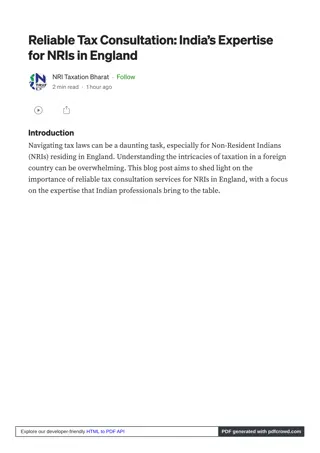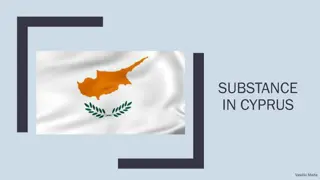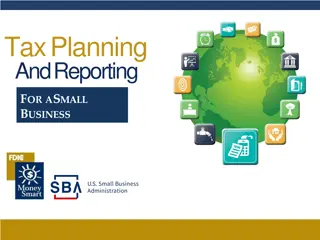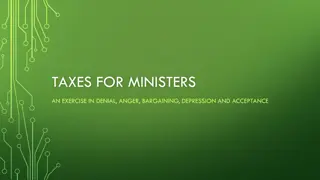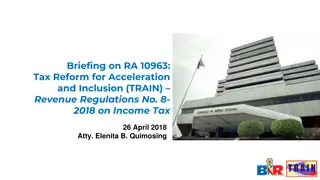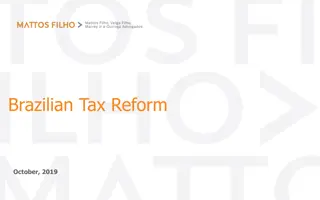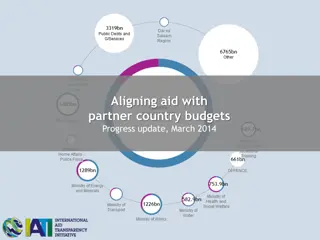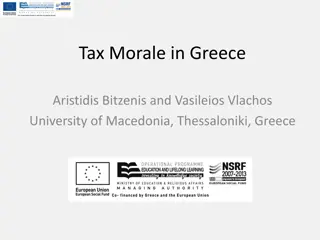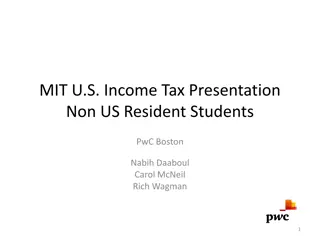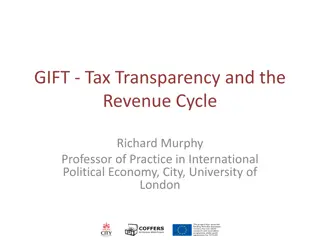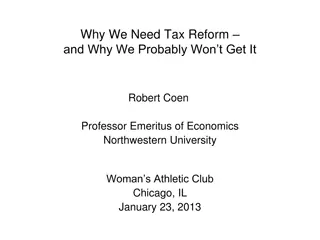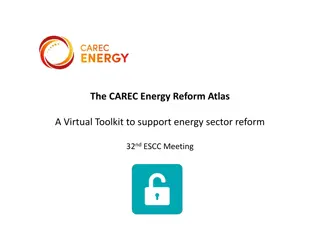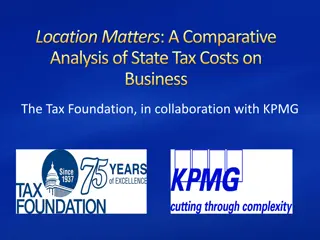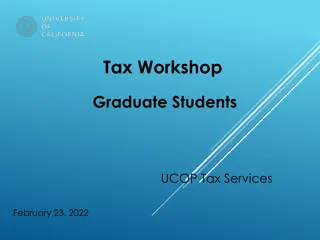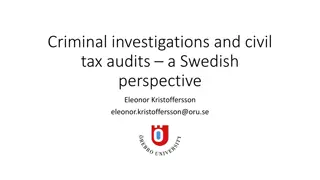Impact of COVID-19 on State Budgets: Insights for Tax Reform
The presentation provides an update on how COVID-19 is impacting state budgets, highlighting the variability of the economic downturn across states. It discusses changes in revenue, unemployment rates, and job losses, with a focus on Kansas and comparisons with neighboring states. The slides also examine GDP declines and revenue fluctuations, urging caution despite signs of optimism.
Download Presentation

Please find below an Image/Link to download the presentation.
The content on the website is provided AS IS for your information and personal use only. It may not be sold, licensed, or shared on other websites without obtaining consent from the author. Download presentation by click this link. If you encounter any issues during the download, it is possible that the publisher has removed the file from their server.
E N D
Presentation Transcript
An update on how COVID-19 is affecting state budgets Prepared for the Governor s Council on Tax Reform November 2020 Richard Auxier
Overview of slides Why the current economic downturn varies significantly across states How revenue has changed since March and what to expect going forward What states are doing in response WWW.TAXPOLICYCENTER.ORG 2
The COVID-19 recession is unprecedented But the severity of the economic downturn varies significantly across states 3
The unemployment rate is improving but still high WWW.TAXPOLICYCENTER.ORG 5
Kansass private job losses are not as bad as most other states KS: -5.0% CO: -4.9% IA: -5.9% MO: -5.3% NE: -3.7% OK: -5.5% In each state (except OK*) leisure and hospitality saw largest drop in both percentage and total jobs *mining (includes oil) was largest percentage drop 7
Kansass second quarter GDP decline was close to nations GDP decline was driven in large part by collapse of accommodation and food service sector; states more dependent on this sector (HI, NY) saw bigger drops. States with large energy sectors (OK) were also harmed more than other states. 8
States revenues changes also vary across states Going forward, there is a case for optimism but a bigger argument for caution 9
Changes in tax revenue varies significantly across states Kansas s total state tax revenues collected between March 2020 and August 2020 were 5.7% lower than over the same period in 2019 State tax revenue changes since March range from a 31.0% decline in Alaska to a 10.2% increase in Idaho Colorado +0.3%; Iowa -3.7%; Missouri -5.7%; Nebraska +0.9%; Oklahoma -6.6% A state s tax revenue might be up, down, or steady depending on the prevalence of the coronavirus, the state s major economic sectors, and its revenue system WWW.TAXPOLICYCENTER.ORG 10
What have we learned so far? Income tax revenue declines were not as bad as predicted The most negatively affected workers were low-income workers; these workers do not always withhold tax from paychecks and often do not owe state income tax Sales tax revenue was depressed in states hard hit by the economic downturn, specifically in states that rely heavily on accommodation and service industries California, Florida, Hawaii, Maryland, and New York One thing not hurt: groceries Oil-dependent states were also hurt more than others because declines in air and car travel affected oil production and sales Alaska, Louisiana, New Mexico, North Dakota, and Oklahoma WWW.TAXPOLICYCENTER.ORG 11
Percent change in state tax revenues: March-September 2020 vs. March- September 2019 12
The future: some optimism but a lot of uncertainty The Kansas Division of Budget recently published a revised revenue estimate that is far more optimistic than its April forecast Kansas revenue will increase in FY 2021 relative to FY 2020, but revenue will decrease in FY 2022 relative to FY 2021 Similarly, recent forecasts are more optimistic than spring forecasts in California, Colorado, Maryland, Pennsylvania, and Virginia But many states still project revenue declines (sometimes in the double-digits) for FY 2022 and revenue problems beyond that WWW.TAXPOLICYCENTER.ORG 13
The case for caution We do not know how the pandemic will spread and economy will change in the winter months ... but we do know that that COVID counts are currently at record highs across the country and economic restrictions are returning We do not know if Congress will provide further fiscal aid for state and local governments ... but we do know that the direct fiscal aid has been spent and the economic provisions that propped up budgets are expiring at the end of the year We also know that Congress s failure to pass further assistance a decade ago prolonged the Great Recession and particularly the ability of state and local governments to recover WWW.TAXPOLICYCENTER.ORG 14
Budget cuts and rainy day funds Most states were forced to cut their FY 2020 budgets, sometimes eliminating $1 billion or more in spending (Colorado, Florida, Georgia, Tennessee) Reminder: state and local budget cuts are often job losses US has lost 1.2 million state & local government jobs since January, or 6% Many states are also planning for additional budget cuts in FY 2021 Much of this is still TBD with 2021 legislative sessions approaching In addition to its economic mix and revenue trends, how much a state cuts now depends in part on its savings both how much it has saved and how much it is willing to draw down now vs. in the future WWW.TAXPOLICYCENTER.ORG 16
Kansass state & local job losses are close to the US average KS: -6.7% CO: -9.4% IA: -3.5% MO: -0.4% NE: -3.9% OK: -3.9% 17
Relatively few major state tax changes so far New Jersey increased its income tax rate taxable income greater than $1 million California made changes to its treatment of NOLs Some states decoupled from provisions in the CARES act This prevented revenue losses but did not increase revenue Colorado, New Mexico, and other states are considering reforming their state income tax expenditures In contrast, Nebraska passed a large property tax cut and New Hampshire is considering business tax cuts during its next legislative session WWW.TAXPOLICYCENTER.ORG 18
State ballot measures on taxes had mixed results in 2020 Arizona passed a large income tax hike on high earners (for education spending) Arkansas approved a higher sales tax rate (for transportation spending) Tobacco tax hikes passed in Colorado and Oregon Gambling was expanded in several states (including in Nebraska) Illinois rejected a progressive income tax system (currently has a flat tax rate) California rejected a tax increase on commercial properties Colorado passed an income tax rate cut and passed a new payroll tax (for PFL) But the big winner was marijuana ... WWW.TAXPOLICYCENTER.ORG 19
There was one distinct tax winner at the ballot box ... WWW.TAXPOLICYCENTER.ORG 20
Thank you Contact information Richard Auxier: rauxier@urban.org Kim Rueben: krueben@urban.org Lucy Dadayan: ldadayan@urban.org Resources online https://www.taxpolicycenter.org/ https://www.urban.org/policy-centers/cross-center-initiatives/state-and-local-finance-initiative https://www.urban.org/policy-centers/cross-center-initiatives/state-and-local-finance- initiative/projects/state-fiscal-pages-covid-edition (NEW 50-STATE COVID DATA RESOURCE) WWW.TAXPOLICYCENTER.ORG 21
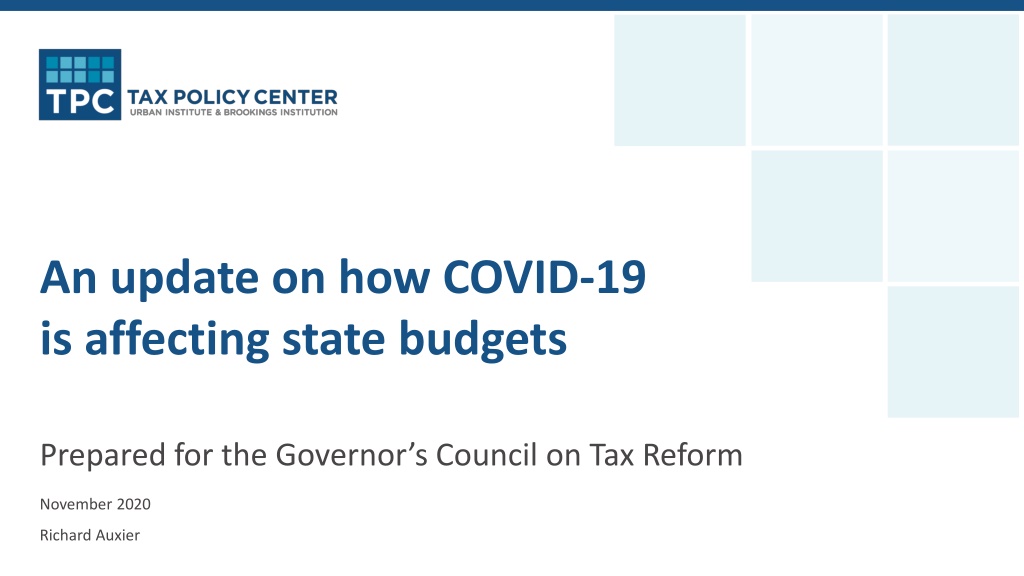


![Town of [Town Name] Real Estate Tax Rates and FY 2024 Budget Summary](/thumb/62211/town-of-town-name-real-estate-tax-rates-and-fy-2024-budget-summary.jpg)
